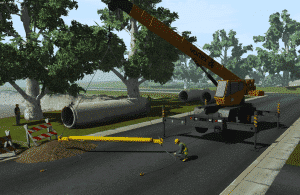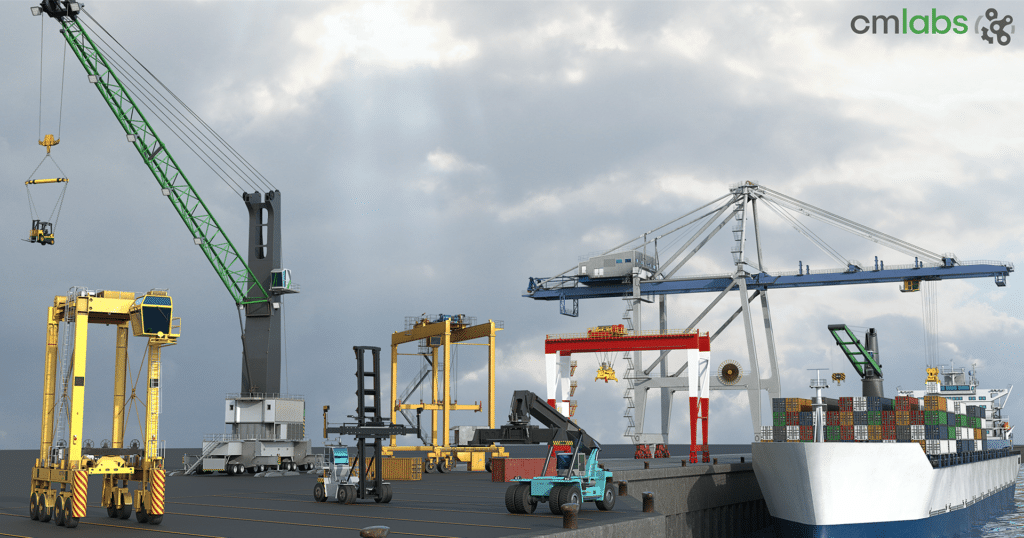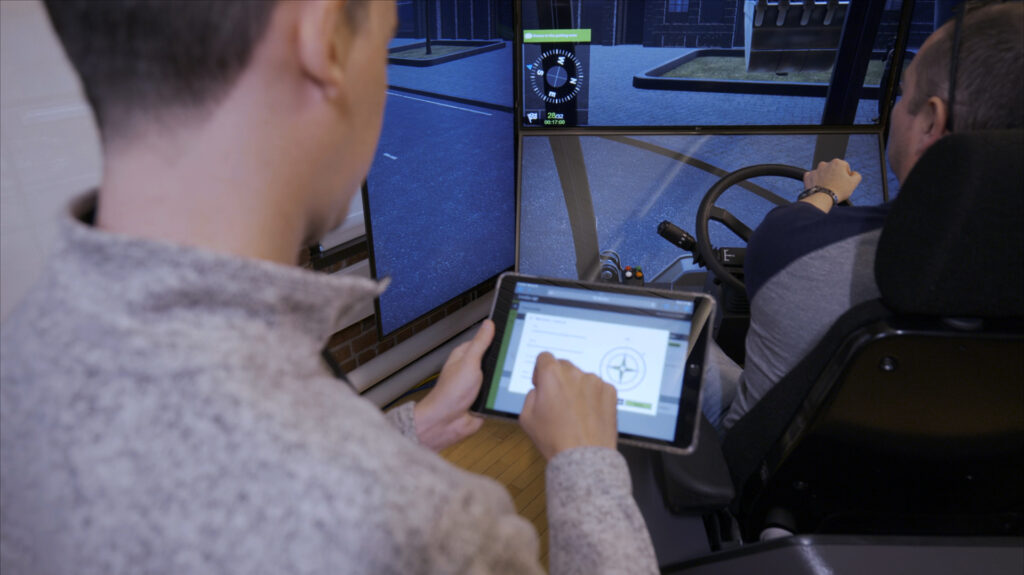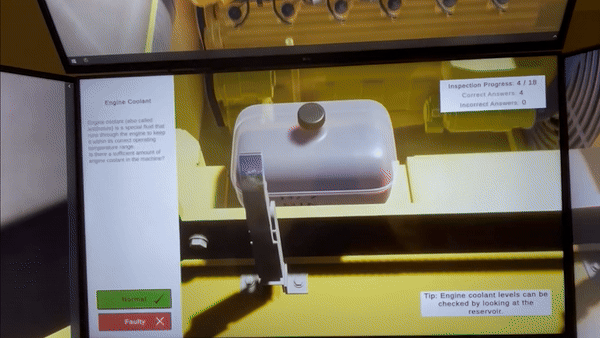
CM Labs is the world leader in crane simulation, thanks to our advanced Cable Systems module. This module allows you to use the Vortex Studio Editor to define a runtime cable via engineering data, and then easily set up waypoints and attachments to add it to any simulation.
We’ve used the Cable Systems to simulate objects ranging from a crane’s hoist to more esoteric uses, such as a bomb-disposal robot tether, a pipeline, or even flexible hydraulic lines on heavy machinery. To showcase this functionality, we’ve provided a mobile crane as part of the samples we supply with Vortex Studio. The crane model combines our Vehicle Systems module (which enables the creation of realistic tracked and wheeled vehicles) with Cable Systems and advanced scripting logic, though the scenario locks the crane in operation mode for simplicity. The scene demonstrates the Cable systems with a spreader and the crane itself; rigging is simulated via a script to attach the hooks as needed. The behaviour and inertia of the hydraulics are provided via a Python script with a low-pass filter.
Note that crew figures and trees will not be visible to users of the Essentials edition of Vortex Studio, users, since the Human and Vegetation libraries are part of the professional editions, but the crane is still interactive.
Some quick operation notes that may not be obvious at first glance:
- First, note that the crane will not accept commands until the outriggers are fully deployed.
- Second, the engine throttle must be used in combination with the respective hoist, boom, and turret commands.
The mobile crane assembly includes some features to increase the fidelity of the model: The turret and booms have some relaxation in their constraints to provide torsion under heavy lifting, and the weighted hook contains a hinge constraint with friction to avoid torsion when the load is rotating. “Mobile Crane Controller” is the main control script of the vehicle. It takes various inputs (either from the VHL or other scripts), and returns values to the Vehicle Systems and constraints to get the crane in motion. Since the crane is locked in place, not all functions are used.
Other scripts provide additional functionalities:
- “Drum Logic” takes inputs from the throttle and joystick and combines them to drive the drum, up to the maximum length of the cable (which is set as a parameter).
- “Anti-Two Block” locks the drum if the hook and the pulley get too close.
The attachment logic in the scene adds a constraint between each sling cable attachment point and the hook attachment point. This operation is performed when the simulation is started. When the hook is within the attraction distance and the “attach” command is triggered, the Max Force value is applied to attract the sling attachment point onto the hook progressively (in real life a crewman would do this).
Note that starting from Vortex Studio 2017c (slated to be launched in coming weeks), these functionalities will be packaged into a unified Hooking feature, for faster setup and better performance. The “Hook Colorization” script handles the colour of the hook, to provide visual feedback to the trainee.
Note that this script is placed at the scene level, not the mechanism’s, since it involves data inputs and outputs from several elements (the crane, the hook, the spreader, and the concrete pipe).


